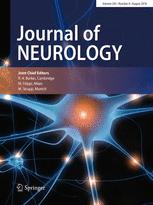
Cannabis oralmucosal spray does not significantly improve neuropathic pain from multiple sclerosis

Cannabis oralmucosal spray does not significantly improve neuropathic pain from multiple sclerosis
A double-blind, randomized, placebo-controlled, parallel-group study of THC/CBD oromucosal spray in combination with the existing treatment regimen, in the relief of central neuropathic pain in patients with multiple sclerosis
J Neurol. 2013 Apr;260(4):984-97. doi: 10.1007/s00415-012-6739-4Synopsis
In a multicentre randomized trial, 339 patients with central neuropathic pain due to multiple sclerosis (MS) were randomized to receive either an oralmucosal spray containing THC and CBD (nabiximols) or placebo spray for 12 weeks, followed by an open-label and randomized-withdrawal phase for another 14 weeks. The primary outcome was at least 30% pain reduction, and secondary outcomes included time...
To view the full content, login to your account,
or start your 30-day FREE Trial today.
FREE TRIAL
LOGIN
Forgot Password?
Explore some of our unlocked ACE Reports below!

Learn about our AI Driven
High Impact Search Feature
Our AI driven High Impact metric calculates the impact an article will have by considering both the publishing journal and the content of the article itself. Built using the latest advances in natural language processing, OE High Impact predicts an article’s future number of citations better than impact factor alone.
Continue



 LOGIN
LOGIN

Join the Conversation
Please Login or Join to leave comments.